Shankar IAS Summary: Animal Diversity of India - 2 | Famous Books for UPSC Exam (Summary & Tests) PDF Download
Mammals - Critically Endangered
Porcula Salvania
Unique Characteristics and Size:
- The Pygmy Hog is the world's smallest wild pig, weighing only 8 kgs, and it constructs nests throughout the year.
Ecological Importance and Indicator Species:
- It serves as a vital indicator of grassland habitat management, crucial for other endangered species like the Indian Rhinoceros, Swamp Deer, Wild Buffalo, and more.
Conservation Initiatives:
- A captive-breeding program was initiated in Assam in 1996, and reintroduction efforts took place in the Sonai Rupai area in 2009 to boost Pygmy Hog populations.
Habitat and Distribution Challenges:
- The Pygmy Hog is found in undisturbed 'terai' grasslands but is now restricted to a single remnant population in the Manas Wildlife Sanctuary due to habitat loss and degradation.
Threats and Linked Parasite:
- Main threats include loss of grasslands, burning, grazing, afforestation, and hunting, impacting the remnant populations. The Pygmy Hog-sucking Louse, which feeds exclusively on Pygmy Hogs, is also at risk due to the interconnected survival dynamics.
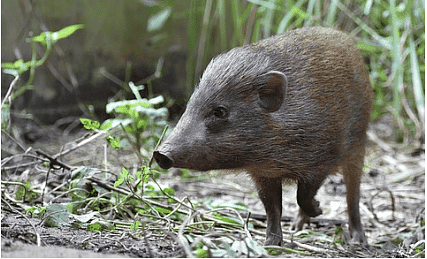 Pygmy Hog
Pygmy Hog
Do you know?
Dart Frogs got their name because hunters would tip their arrows in the frog's poisons. Sadly, because people are cutting down rainforests for farming and ranching, Poison Dart Frogs are at risk. The Blue Poison Dart Frog is the most endangered due to the pet-shop market.
Andaman White-toothed Shrew (Crocidura andamanensis), Jenkin’s Andaman Spiny Shrew (Crocidura jenkinsi) and the Nicobar White-tailed Shrew (Crocidura nicobarica)
Endemic Species:
- The Andaman White-toothed Shrew (Crocidura andamanensis), Jenkin's Andaman Spiny Shrew (Crocidura jenkinsi), and the Nicobar White-tailed Shrew (Crocidura nicobarica) are endemic to India.
Nocturnal Behavior and Specialized Habitat:
- These shrews are typically active during twilight or night hours and have specialized habitat requirements, preferring leaf litter and rock crevices.
Distribution:
- The Andaman White-toothed Shrew is found on Mount Harriet in the South Andaman Islands.
- The Jenkin's Andaman Spiny Shrew is found on Wright Myo and Mount Harriet in the South Andaman Islands.
- The Nicobar White-tailed Shrew (Crocidura nicobarica) is found in the southern tip of Greater Nicobar Island and extends from Campbell Bay National Park to the Galathea River in the Andaman and Nicobar Islands.
Threats:
- Major threats to these shrews include habitat loss due to selective logging, as well as natural disasters such as tsunamis and drastic weather changes. These factors contribute to the decline in their populations.
 Andaman shrew
Andaman shrew
Do you know?
Penguins don't live near freshwater. they drink salt water. They have a special gland in their bodies that takes the salt out of the water they drink and pushes it out of grooves in their bill. A handy inhouse filtration system!
Kondana Rat (Millardia kondana)
Unique Species:
- The Kondana Rat (Millardia kondana) is a nocturnal burrowing rodent found exclusively in India, and it is known to sometimes build nests.
Habitat Requirements:
- Its habitat includes tropical and subtropical dry deciduous forests and tropical scrub.
Restricted Distribution:
- The Kondana Rat is known only from the small Sinhagarh Plateau (about one km2) near Pune in Maharashtra.
- It has been reported from an elevation of about 1,270 m above mean sea level.
Threats:
- Major threats to the Kondana Rat include habitat loss, overgrazing of vegetation, and disturbance from tourism and recreational activities. These factors pose a risk to its population and survival.
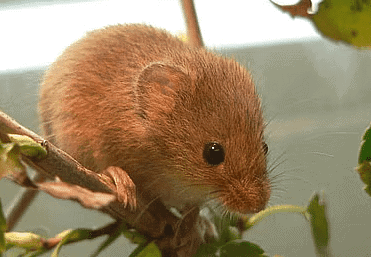 Kondana Rat
Kondana Rat
Do you know?
Tiger, delineates its own territory by urinating on the trees and rocks along the boundary and lives within that. Trespass by another male usually ends up in conflict which turns into a bloody battle sometimes. The tigresses in a family may have overlapping territories within lhe male's territory. Even though tiger is a powerful predator with plenty of tactics, it is observed that only one in twenty attempts of hunting is really successful.
The Large Rock Rat or Elvira Rat (Cremnomys elvira)
Unique Species:
- The Large Rock Rat or Elvira Rat (Cremnomys elvira) is a medium-sized, nocturnal, and burrowing rodent that is endemic to India.
Habitat Preferences:
- It thrives in the habitat of tropical dry deciduous shrubland forest, particularly in rocky areas.
Restricted Distribution:
- The Large Rock Rat is known only from the Eastern Ghats of Tamil Nadu.
- It has been recorded from an elevation of about 600 m above mean sea level.
Threats:
- Major threats to the Large Rock Rat include habitat loss, conversion of forests, and fuel wood collection. These activities pose significant risks to its population and the overall survival of the species.
 Elvira rat
Elvira rat
Do you know?
The major difference between Tortoise vs turtle being that the land dwelling ones are called Tortoises and water dwelling are called lljrtles. Tortoise are herbivorous where as turtle are omnivorous
The Namdapha Flying Squirrel (Biswamoyopterus biswasi)
Unique Species:
- The Namdapha Flying Squirrel (Biswamoyopterus biswasi) is a distinctive flying squirrel, being the only one in its genus.
Restricted Range:
- This unique flying squirrel is restricted to a single valley within the Namdapha National Park (N.P.) or Wildlife Sanctuary (W.L.S.) in Arunachal Pradesh.
Habitat Preferences:
- It primarily inhabits tropical forests within its limited range.
Distribution:
- The Namdapha Flying Squirrel is exclusively found in the Namdapha Tiger Reserve in Arunachal Pradesh.
Threats:
- A significant threat to this species is hunting for food, posing a risk to its population and survival. Conservation efforts are crucial to protect this unique flying squirrel from further decline.
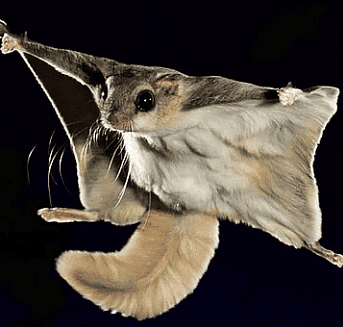 Namdapha Flying Squirrel
Namdapha Flying Squirrel
The Sumatran Rhinoceros (Dicerorhinus sumatrensis)
Smallest and Most Endangered:
- The Sumatran Rhinoceros (Dicerorhinus sumatrensis) holds the distinction of being the smallest among the five rhinoceros species and is also the most endangered.
Historical Range in India:
- Although once present in the foothills of the Himalayas and north-east India, the Sumatran Rhinoceros is now thought to be regionally extinct in India.
Status of Javan Rhinoceros:
- The information provided also notes that the Javan Rhinoceros (Rhinoceros sondaicus) is believed to be extinct in India. Only a small number survives in Java and Vietnam.
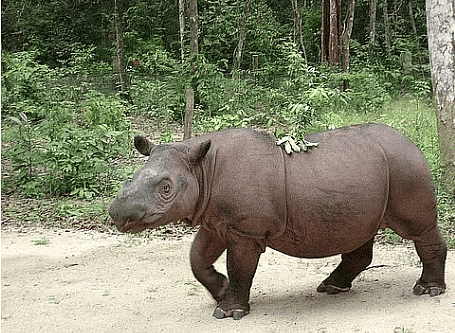 Sumatran rhinoceros
Sumatran rhinoceros
Do you know?
Sharks have the most powerful jaws on the planet. Both the upper and lower jaws move. It tosses its head back and forth to tear loose a piece of meat which it swallows whole.
Kashmir stag/ hangul (Cervus elaphus hanglu)
Kashmir Stag/Hangul (Cervus elaphus hanglu):
- The Kashmir Stag or Hangul (Cervus elaphus hanglu) is a subspecies of the Red Deer native to India.
Habitat and Distribution:
- Found in dense riverine forests, high valleys, and mountains within the Kashmir valley and northern Chamba in Himachal Pradesh.
State Animal of J&K:
- Designated as the state animal of Jammu and Kashmir, the Kashmir Stag holds cultural and ecological significance in the region.
Threats:
- Major threats to the Hangul include habitat destruction, over-grazing by domestic livestock, and poaching. Conservation efforts are essential to mitigate these threats and ensure the survival of this iconic species.
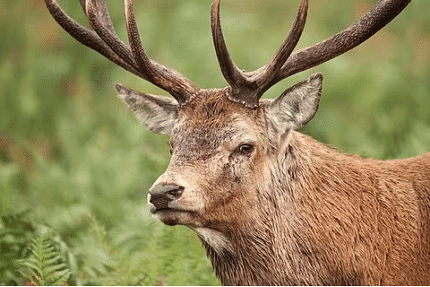 Kashmir stag
Kashmir stag
Do you know?
Indian Water Monitor lizard is one of the largest as well as the heaviest species of lizards, second only to the Komodo Monitors
Marine Mammals
Freshwater / River Dolphin
Habitat/Distribution: Found in rivers of India, Bangladesh, Nepal, and Pakistan. The species is split into two subspecies, the Ganges River Dolphin and Indus River Dolphin.
- Ganges River Dolphin :
- Habitat/Distribution: Inhabits the Ganges and Brahmaputra Rivers and their tributaries in Bangladesh, India, and Nepal.
- Ecological Significance: Recognized as a crucial indicator of the health of the entire river ecosystem.
- National Aquatic Animal: Acknowledged by the government of India as its National Aquatic Animal.
- Indus River Dolphin:
- Habitat/Distribution: Thrives in the Indus River in Pakistan and its Beas and Sutlej tributaries.
- State Aquatic Animal of Punjab: Designated as the state aquatic animal of Punjab.
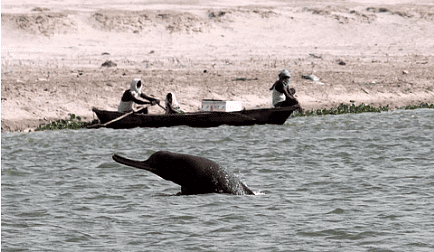 Ganga river dolphin
Ganga river dolphin
The freshwater or river dolphin is a significant species in South Asian rivers, playing a crucial role in indicating the health of river ecosystems. Recognized at both the national and state levels, efforts are essential to conserve these dolphins and their habitats.
Herbivorous Marine Mammals:
This category includes species such as dugong and manatees, which inhabit swamps, rivers, estuaries, marine wetlands, and coastal marine waters.
- Dugong :
- Scientific Name: Dugong dugon
- Common Name: Also called the sea cow.
- Status: Classified as vulnerable.
- Threats: Face threats from hunting (for meat and oil), habitat degradation, and fishing-related fatalities.
- Conservation Efforts: The Tamil Nadu government has taken steps by establishing India's first conservation reserve for the Dugong in the Gulf of Mannar, Palk Bay. The Ministry of Environment, Forests, and Climate Change has also formed a 'Task Force for Conservation of Dugongs' to address conservation issues.
 Dudong
Dudong
- Manatees :
- Habitat/Distribution: Found in regions such as the Caribbean Sea, Gulf of Mexico, the Amazon Basin, and West Africa.
- Threats: Face challenges from coastal development, red tide, and hunting.
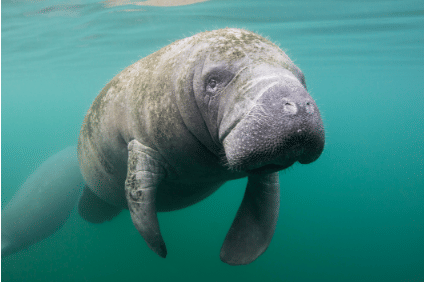 Manatees
Manatees
These herbivorous marine mammals play crucial roles in maintaining the balance of marine ecosystems. Conservation efforts, as seen with the establishment of reserves and task forces, are essential for their survival and the preservation of their habitats.
Do you know?
Sharks give birth to pups in three ways
(i) eggs are laid (like birds)
(ii) eggs hatch inside the mother and then are born
(iii) pups (sharks) grow inside the mother.
Few Exceptions
Egg Laying Mammals
Monotremes:
- Unique Feature: Monotremes, a subgroup of mammals, lay eggs instead of giving birth.
- Species: Includes the duck-billed platypus and four species of spiny anteaters (echidna).
- Distribution: Exclusive to Australia and New Guinea.
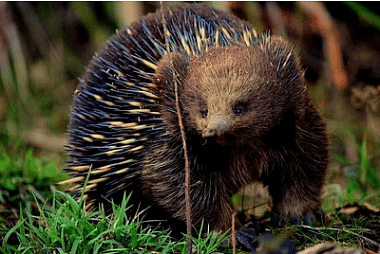 Monotremes
Monotremes
- Echidnas (Spiny Anteaters):
- Habitat/Distribution: Found in Australia and New Guinea.
- Reproductive Method: Females carry the egg in a pouch on the belly until hatching, after which the young finds a mammary gland for nourishment.
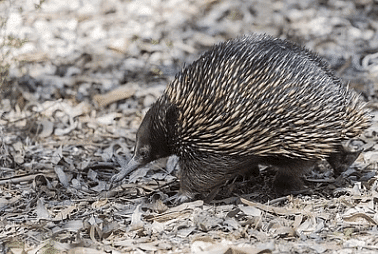 Echidanas
Echidanas
Platypus:
- Habitat/Distribution: Endemic to eastern Australia, including Tasmania.
- Reproductive Method: Female lays eggs in a burrow lined with dry vegetation. The male platypus has venom potent enough to harm small animals or cause severe pain in humans.
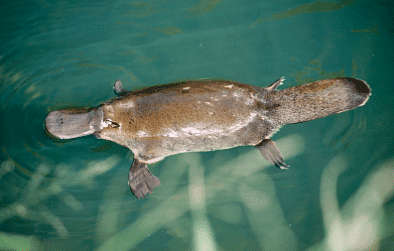 Platypus
Platypus
Marsupials
General Characteristics:
- Definition: Marsupials are pouched mammals, including species like wallabies and kangaroos.
- Reproductive Method: Marsupials have a short-lived placenta, and offspring are born early, climbing to the mother's nipples to continue development.
Examples of Marsupials:
- Phalangers, Opossum, Koala, Tasmanian devils, Kangaroo, Marsupial Mole (4 feet), Wallaby, Bandicoot, Wombats, Tasmanian Wolf/Tiger, and Dasyure.
 Marsupials
Marsupials
- Phalangers, Opossum, Koala, Tasmanian devils, Kangaroo, Marsupial Mole (4 feet), Wallaby, Bandicoot, Wombats, Tasmanian Wolf/Tiger, and Dasyure.
- Extinct Marsupials:
- Examples include the quagga and the marsupial wolf.
- Comparison with Placental Mammals:
- Placental Mammals: Bear live young nourished in the uterus through a placenta, allowing for longer gestation times.
- Marsupials: Have a short gestation period and a yolk-type placenta.
This diversity in reproductive strategies among monotremes and marsupials showcases how nature adapts to different environments, emphasizing the uniqueness of mammalian species in Australia and New Guinea.
Do you know?
Not all sharks are fierce carnivores. Some are quite harmless. Oddly enough, the most harmless sharks tend to be the largest! The basking shark, the whale shark and the Mega mouth sharks all fit this description. These huge sharks eat plankton.
Birds - Critically Endangered
Jerdon's Courser:
Description:
- A nocturnal bird exclusively found in the northern part of Andhra Pradesh, peninsular India.
- Considered a flagship species for the extremely threatened scrub jungle.
- Rediscovered in 1986, leading to the declaration of the rediscovery area as the Sri Lankamaleswara Wildlife Sanctuary.
Habitat and Distribution:
- Thrives in undisturbed scrub jungle with open areas.
- Endemic to Andhra Pradesh.
Threats:
- Faces threats from clearing of scrub jungle, creation of new pastures, growing of dry land crops, illegal trapping of birds, plantations of exotic trees, quarrying, and construction of River Canals.
 Jerdon's Courser
Jerdon's Courser
Forest Owlet:
Rediscovery:
- Rediscovered in 1997 after being lost for over 113 years. Its reappearance on the list of Indian birds is a remarkable event.
Habitat and Distribution:
- Found in dry deciduous forest.
- Habitat/distribution includes South Madhya Pradesh, northwest Maharashtra, and north-central Maharashtra.
Threats:
- Faces threats from logging operations and the burning and cutting of trees, which damage roosting and nesting trees of the Forest Owlet.
 Forest Owlet
Forest Owlet
Do you know?
Russell's Viper is responsible for the more deaths due to snakebite than any other venomous snake. It is highly irritable and when threatened, coils tightly, hisses, and strikes with a lightning speed. Its hemotoxic venom is a very potent coagulant, which damages tissue as well as blood cells.
The White-bellied Heron
- Description:
- An extremely rare bird found in limited sites in Assam, Arunachal Pradesh, Bhutan, and Myanmar.
- Habitat/Distribution:
- Inhabits rivers with sand or gravel bars or inland lakes.
- Distributed in Bhutan, northeast India, hills of Bangladesh, and north Myanmar.
- Threats:
- Faces threats from loss and degradation of lowland forests and wetlands through direct exploitation and human disturbance.
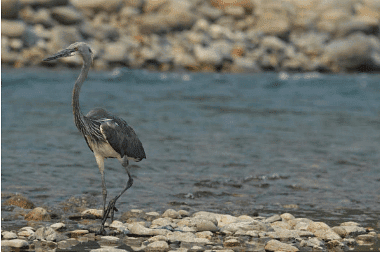 The White-bellied Heron
The White-bellied Heron
The Bengal Florican
- Description:
- A rare bustard species known for its distinctive mating dance where males advertise territories.
- Habitat/Distribution:
- Thrives in grasslands occasionally interspersed with scrublands.
- Native to Cambodia, India, and Nepal, with occurrences in Uttar Pradesh, Assam, and Arunachal Pradesh.
 The Bengal Florican
The Bengal Florican
- Threats:
- Population decline due to the ongoing conversion of grassland habitat for various purposes, including agriculture.
The Himalayan Quail
- Status:
- Presumed extinct since 1876; a possible sighting was reported in Nainital in 2003.
- Habitat/Distribution:
- Prefers tall grass and scrub on steep hillsides.
- Originally located in the Western Himalayas.
- Threats:
- Indiscriminate hunting during the colonial period and habitat loss are believed to be causes of its decline.
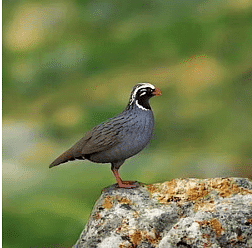 The Himalayan Quail
The Himalayan Quail
Pink-headed Duck
- Status:
- Not conclusively recorded in India since 1949.
- Habitat/Distribution:
- Found in overgrown still-water pools, marshes, and swamps in lowland forests and tall grasslands.
- Recorded in India, Bangladesh, and Myanmar, with maximum records from north-east India.
- Threats:
- Faces threats from wetland degradation, habitat loss, and hunting.
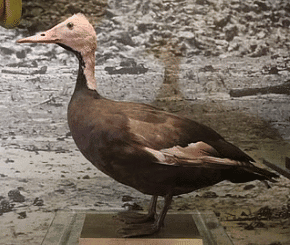 Pink-headed Duck
Pink-headed Duck
Sociable Lapwing (Vanellus gregarious)
- Status:
- Listed as critically endangered due to a rapid population decline.
- Habitat/Distribution:
- Inhabits fallow fields and scrub deserts.
- Found in central Asia, Asia Minor, Russia, Egypt, India, Pakistan, with restricted distribution in the north and northwest of India.
- Threats:
- Faces threats from habitat conversion to arable land, illegal hunting, and proximity to human settlements.
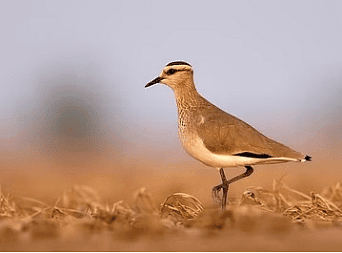 Sociable Lapwing
Sociable Lapwing
Spoon Billed Sandpiper
- Description:
- Requires highly specialized breeding habitat, with some of the last existing wintering grounds in India.
- Habitat/Distribution:
- Found in coastal areas with sparse vegetation.
- Recorded in West Bengal, Orissa, Kerala, and Tamil Nadu.
- Threats:
- Threatened by habitat degradation, land reclamation, and human disturbance, leading to high nest desertion incidence.
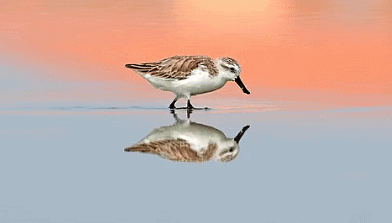 Spoon Billed Sandpiper
Spoon Billed Sandpiper
Siberian Crane
- Description: A large migratory bird that breeds and winters in wetlands; last documented sighting in 2002
- Habitat/Distribution: Prefers wetland areas and known to winter at Keoladeo National Park in Rajasthan.
- Threats: Faces threats from pesticide pollution, wetland drainage, habitat development into agricultural fields, and hunting.
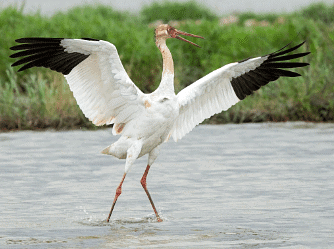 Siberian Crane
Siberian Crane
Do you know?
Hoolock Gibbon is the only ape found in India. Rest of the monkeys are all macaques and langurs. In India is distributed in the northeast India.
Palms are typically unbranched trees with only one trunk (columnar stem), called the "caudex," which ends in a crown of large leaves.
Coral
Fire corals
Fire corals (Milleporidae) are marine organisms that belong to the hydrozoan class, and they are more closely related to jellyfish than true corals. Here are some key points about fire corals:
- Sensation on Contact: When in contact with fire corals, individuals typically experience a burning sensation, similar to the sting from a jellyfish. It is essential to handle them with care to avoid these stings.
- Habitat: Fire corals are generally found in murky inshore waters. They display a certain level of tolerance for siltation, making them adaptable to a range of environmental conditions. Despite their presence in inshore waters, they can also be found in clear offshore sites.
- Distribution: The distribution of fire corals includes regions such as Indonesia, the Gulf of Chiriqui in Panama, and the Pacific Province. However, there are indications that they may have become extinct in certain areas, including Australia, India, Indonesia, Malaysia, Panama, Singapore, and Thailand.
- Threats: One significant threat to fire corals is their collection for decoration and the jewelry trade. The demand for these organisms in the trade industry poses a risk to their populations. Additionally, fire corals are sensitive to temperature changes. The effects of global warming, including rising sea temperatures, have led to bleaching events in coral reefs. This sensitivity to temperature rise may have contributed to the disappearance of fire corals from many marine areas.
- Status: There are concerns that fire corals may have completely disappeared from the majority of marine areas due to the combined effects of human activities such as collection and the impacts of climate change, particularly global warming-related bleaching.
 Fire Corals
Fire Corals
Understanding the threats and vulnerabilities of fire corals is crucial for conservation efforts to protect these marine organisms and the ecosystems they inhabit.
Are black rhinos really black?
No, black rhinos are not black at all. The species probably derives its name as a distinction from the white rhino (which is not white at all either) or from the dark-colored local soil that often covers its skin after wallowing in mud.
Bird’s Migration
Migration refers to the regular, recurrent, and cyclical seasonal movement of birds from one place to another. The distance of migration ranges from short distances to thousands of kilometers. However, at the end of the period, birds will eventually return to the original place.Reasons for migration:
- To avoid adverse factors (extreme climatic conditions).
- To manage food shortages.
- To manage shortages of water.
- To have better breeding conditions.
- Less competition for safe nesting places.
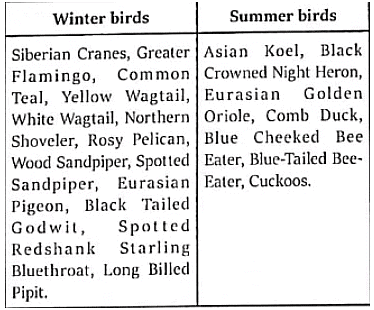 Migratory Birds
Migratory Birds
Wildlife Diseases
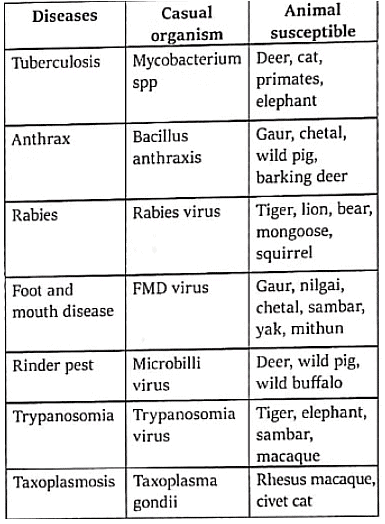 Disease caused by different animals
Disease caused by different animals
Do you know?
All birds have feathers and feathers do many jobs for birds. It keeps them warm, wing feathers allow flight and tail feathers are used for steering. The color of the feathers can be used to hide the bird or to help the bird find a mate.
Species Extinction
Extinction is caused through various processes:Deterministic processes: These have a cause and effect, including glaciations and human interference like deforestation.
Stochastic processes: Involving chance and random events affecting survival and reproduction. Examples include unexpected weather changes, decreased food supply, diseases, and an increase in competitors, predators, or parasites. These may act independently or add to deterministic effects.
The impact of these processes depends on the size and degree of genetic diversity and resilience of populations.
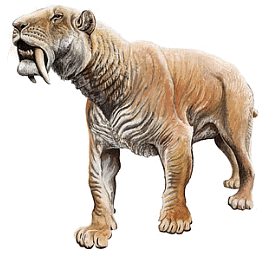 Shabro thothed tiger
Shabro thothed tiger
Traits that increase a species' vulnerability to extinction due to habitat fragmentation include:
- Rarity or low abundance.
- Poor dispersal ability.
- Ecological specialization.
- Unstable populations.
- High trophic status, as animals occupying higher trophic levels usually have smaller populations.
- Low adult survival rates.
- Low intrinsic rate of population increase.
Factors such as body size, fecundity, and dietary specialization also play a role.
Natural extinctions:
- Caused by factors like continent drifting, climate change, tectonic activity, increased volcanic activity.
- Examples include the late Ordovician global glaciations (439 Mya) and the late Cretaceous extinction associated with an extra-terrestrial impact.
- Extinction in vascular plants has been more gradual, often due to competitive displacement or gradual climate change.
 Megalodon
Megalodon
Artificial Extinction:
- While species extinction is a natural process, human-caused extinctions are now happening at rates exceeding natural estimates.
- Threats include direct causes like hunting, collection, capture, and persecution.
- Indirect causes involve habitat loss, modification, fragmentation, and the introduction of invasive species.
Understanding these factors is crucial for conservation efforts to mitigate the impact of human activities on biodiversity and prevent further species loss.
Man - Animal Conflict
It refers to the interaction between wild animals and people and the resultant negative impact on people or their resources, or wild animals or their habitat. It occurs when wildlife needs overlap with those of human populations, creating costs to residents and wild animals.
Causes:
- Human population growth
- Land use transformation
- Species habitat fragmentation, loss, degradation
- Increasing livestock populations and competitive exclusion of wild herbivores
- Growing interest in ecotourism and increasing access to nature reserves
- Abundance and distribution of wild prey
- Increasing wildlife population as a result of conservation programs
- Climatic factors
- Stochastic events (e.g., fire)
Impacts:
- Crop damage
- Livestock depredation
- Injuries to people
- Loss of human life
- Damage to property
- Injuries to wildlife
- Animal deaths
- Destruction of habitat
Preventive strategies:
- Artificial and natural barriers (physical and biological)
- Guarding
- Alternative high-cost livestock husbandry practices
- Relocation: voluntary human population resettlement
- Waste management systems that restrict wildlife access to refuse
Mitigative strategies:
- Compensation systems
- Insurance programs
- Incentive programs
- Community-based natural resource management schemes (CBNRMS)
- Regulated harvest
- Increase alternative crops, preys, or water points
- Wildlife translocation
- Conservation education for local populations
- Better sharing of information.
Do you know?
Black Panther is not a separate species. Blackness, the general darkening of colour is due to the excessive presence of a substance called Melanin which intensifies pigmentation. The production of melanin is increased where there is a combination of high temperature, humidity and reduced light. Both black and normal-coloured cubs may be produced in the same litter.
Advisory for Managament of Human-Wildlife Conflict (HWC)
The advisory makes prescriptions for the States/Union Territories for dealing with Human-Wildlife conflict situations and seeks expedited inter-departmental coordinated actions, adoption of early warning systems, creation of barriers, dedicated circle-wise Control Rooms with toll-free hotline numbers, Identification of hotspots, and formulation and implementation of special plans for improved stall-fed farm animals, etc.
The advisory envisages empowering gram panchayats in dealing with the problematic wild animals as per the section 11 (1) (b) of Wild Life (Protection) Act, 1972.
Payment of a portion of ex-gratia as interim relief within 24 hours of the incident to the victim/family.
Utilizing add-on coverage under the Pradhan Mantri Fasal Bima Yojna for crop compensation against crop damage due to HWC and augmenting fodder and water sources within the forest areas are some key steps envisaged to reduce HWC.
|
1209 videos|2197 docs|849 tests
|
FAQs on Shankar IAS Summary: Animal Diversity of India - 2 - Famous Books for UPSC Exam (Summary & Tests)
| 1. What are some examples of critically endangered marine mammals in India? |  |
| 2. Why are marine mammals particularly vulnerable to extinction? |  |
| 3. What are some conservation efforts being made to protect critically endangered birds in India? |  |
| 4. How are marine mammals different from other mammals in terms of their habitat and diet? |  |
| 5. What are the main threats to the survival of critically endangered mammals in India? |  |
















